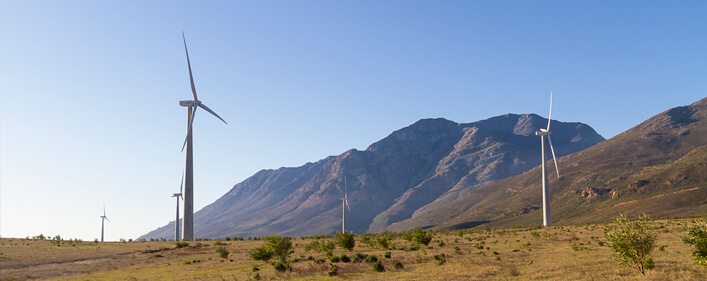This article is from the Project Finance NewsWire from Chadbourne Parke LLP newsletter, authored Keith Martin in Washington.
Two chief financial officers of major U.S. wind companies and three leading tax-equity investors talked in mid-October about how much tax equity can be raised on wind farms, current yields, the effect that low capacity factors and falling electricity prices are having on deals, the extent to which the tax-equity market will finance projects that relied on modest physical work at the project site or a transformer factory to get under construction in late 2014, whether tax equity can be raised on 2017 projects, developer fees and other issues. The conversation took place at the American Wind Energy Association’s annual finance conference in New York.

How much tax equity can be raised on wind farms, what are current yields, and what effect does low-capacity factors and falling electricity prices have on deals? That was the question.
The panelists are Bernardo Goarmon, executive vice president and chief financial officer of EDP Renewables North America, Tom Festle, chief financial officer of E.On Climate & Renewables North America, Jack Cargas, a managing director at Bank of America Merrill Lynch, Yale Henderson, a managing director at JPMorgan Capital Corporation, and Kenji Ogawa, a managing director at MUFG Union Bank. The moderator is Keith Martin with Chadbourne in Washington
MARTIN: Bernardo Goarmon, CFOs can draw on various kinds of capital. There are loan guarantees, export credits, and other forms of government-assisted debt, straight debt, tax equity, back-levered or subordinated debt and true equity. What share of the capital for the typical wind farm today comes from tax equity?
GOARMON: For a project on which production tax credits will be claimed, probably between 55% on the low end to 75% on the high end for a project with high wind performance and, therefore, more tax credits.
MARTIN: Tom Festle, same number?
FESTLE: Yes, same range. We try to invest in high wind areas with competitive construction costs.
MARTIN: Yale Henderson, the figures we have heard so far are the amount of tax equity that can be raised in a partnership flip transaction. What determines whether the transaction will raise 55% or 75% of the capital cost?
HENDERSON: A number of factors. They are the wind regime, how many production tax credits are being generated, the asset cost and the amount of depreciation. Ultimately, the CFO is trying to optimize the structure by retaining as much cash as possible. Monetizing cash flow through the tax equity deal is not a goal of the CFO, and we are happy to accommodate him or her because it makes for a safer transaction from our perspective.
MARTIN: The less cash the tax equity investor gets, the closer you are to the bottom end of the range. Bernardo said 55% at the low end.
HENDERSON: For a PTC deal you never get below 50% because, if you do, then you will not be able to monetize the depreciation effectively. The low end of the range is probably 50% for a PTC deal and in the 40% range for an ITC deal.
MARTIN: Kenji Ogawa, Tom Emmons from Rabobank said on the panel immediately before this one that he has not seen a leveraged partnership flip deal for a long time. Is that structure now extinct and, if so, why?
OGAWA: I would not say that it is extinct, but it is selectively used. You really need scale to make the numbers work. In addition, there are probably only three or four tax equity investors who will consider doing a leveraged tax equity transaction. You need a large project with low risk and low variability in the wind regime.
MARTIN: Jack Cargas, agree?
CARGAS: I would call it extinct.
MARTIN: Yale Henderson?
HENDERSON: It’s dead.
MARTIN: Bernardo Goarmon, is anyone claiming an investment tax credit instead of production tax credits on new wind farms?
GOARMON: Frankly, we do not see the economics working for investment credits. PTCs are a superior way of financing.
MARTIN: Tom Festle, do you agree?
FESTLE: We always look, and it never works. Our projects are too productive.
MARTIN: Kenji Ogawa, have you seen any ITC deals recently in the wind market?
OGAWA: I am aware of only one wind deal this year that was done on ITC basis.
MARTIN: Why was it done that way?
OGAWA: Cost.
Read the rest at: http://www.chadbourne.com/wind-tax-equity-update_projectfinance
Filed Under: Financing, News





